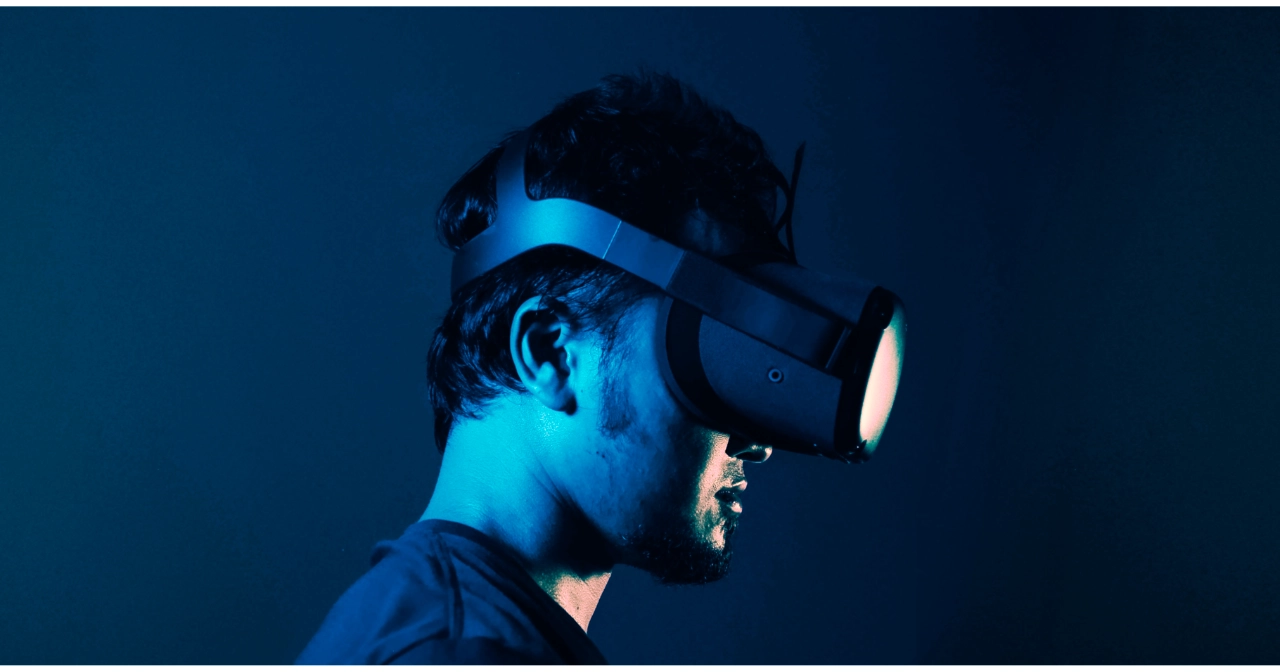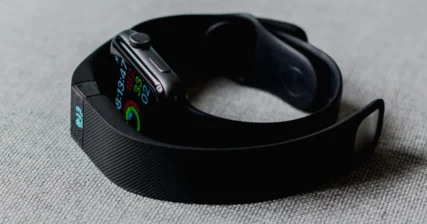Listen on: Apple Podcasts | Spotify
By the end of 2022, almost everyone will have heard of the term “web3.” Many will engage with it in one way or another, even if they don’t realize they’re part of the next evolution of the worldwide web.
Within a few years, I expect it’ll become a regular part of our lifestyle, with most homes owning at least one pair of virtual reality glasses, used for shopping, playing, and visiting with friends and family members.
Like Web2, which introduced us to chat rooms, social media platforms, and e-commerce, Web3 will offer many new ways to be entertained and stay connected. Undoubtedly, we’ll also deal with many new social, mental, and physical side effects as well.
I’ve been learning a lot about web3. What I share below are just some initial thoughts related to health and fitness.
What is web3?
Web 1.0 begin in the early 1990s. Remember dial-up connections and “You’ve got mail?” It was slow, but the ability to read a news story online or see a picture sent across the globe was worth the five minutes it took to load a page. This version of the web offered mainly rudimentary web pages which you couldn’t interact with, and email.
Web 2.0 brought much faster data transfers and upgrades to technology. This opened the door for e-commerce and social media. Shortly thereafter, smartphones came along and eventually, we were able to do almost everything on them that we could on a desktop computer.
One of the biggest problems, though, is that these upgraded, personalized experiences required something very personal: your data and privacy. By now, you’ve noticed that when you use Chrome to visit a company’s online store, you’ll see an add from them when you scroll through your Facebook feed. Or, you might even see an add from one of their competitors.
In some ways, this might be helpful. In others, it can be creepy. Especially when companies sell your data to other companies. Or, when the government monitors your digital footprint. Combine this with your use of credit and debit cards, and it would be pretty easy to see what you’re doing everyday and who you’re with.
In essence, Web 2.0 gave birth to Big Tech, which enhanced the powers of Big Brother. Talking about either of them would have labeled you a Conspiracy Theorist a couple of years ago. Today, the dark sides of both are undeniable.
If you’re not yet concerned about Big Tech, I recommend listening to this Joe Rogan interview with Dr. Robert Epstein (Episode #1768).
If you’re not yet concerned about how Big Brother is looking over your shoulder, I’d recommend getting your news from somewhere other than CNN or MSNBC.
Web 3.0, or web3, is based on blockchain, a decentralized technology system where the individual owns their data and controls their privacy.
When you hear the term “blockchain,” you might think of cryptocurrency like Bitcoin, and rightfully so. Bitcoin is what introduced most of the world to blockchain technology. But blockchain technology can do much more than offer an alternative way to store and spend digital currency.
For our purposes here, I simply want to emphasize that blockchain led us to web3 and web3 will become part of our way of life going forward. Increased privacy for individuals and transparency for companies is a good thing. But it also ushers us into a world of virtual reality and even more potential reliance on computers and smartphones than ever. As a result, it could make an already-overweight and unhealthy society more sick than ever.
Web3 Opportunities for Health and Fitness
Web3 not only comes with new opportunities and risks, but it also comes with many new terms and concepts. The more you hear these terms, the more they’ll start to make sense. So, don’t worry if you feel like some of this looks like word soup.
NFTs and Lifetime Memberships
NFT stands for Non-Fungible Token. It is a unique digital asset assigned to one person or group. The digital asset could be a video, picture, or some other file. The digital asset could be connected to a physical asset as well.
For example, you could buy a pair of shoes that come with an NFT of that same shoe to show it’s exclusively yours. That way, you can show off your shoes in the real world or in virtual reality, if you’re in to that sort of thing.
NFTs can also be a way to gain community or membership access. If I were an executive of a fitness company, I’d explore the idea of producing a set number of NFTs that provide the owner with an all-access membership.
Let’s say a family membership to your favorite fitness center costs $300 per month, or $3600 per year.
I expect fitness companies will eventually offer NFTs as a way to own that membership, and not need to pay the $300 per month. Instead, you might buy that NFT for $6000 and retain membership benefits as long as you want them.
At some point, you might decide to sell your NFT and get $10,000 for it. That might sound like a lot of money, but if someone could hold it for five years and use the gym consistently, it would pay for itself. The cool thing about NFTs is that the fitness company can set it up so they get a percentage each time the NFT is sold. If they got 10% with each sale, it helps them maintain their profits, and even incentivizes them to help you sell it, if you wish. The more value the membership has, the higher the price point the NFT sells for, and the more money both the NFT owner and the fitness company make.
This is exciting for a gym member because it can do away with monthly charges or annual contracts. It’s exciting for the fitness company because it creates a different revenue stream and because it’s built on the blockchain, it significantly reduces expenses like credit card fees.
DAOs and Community-Owned Fitness Centers
DAO is another term you’ll hear a lot about in the coming years. It stands for Decentralized Autonomous Organization. As its name suggests, it’s an organization run by the people who fund it, not by the person or people who come up with the business idea. The rules of the organization are defined prior to funding it, so those who invest know what they’re getting into. The business is then governed through automation by those rules, not by an overcrowded corporate management team.
One of the most newsworthy DAOs is the ConstitutionDAO, which tried to buy one of the last remaining copies of the U.S. Constitution. They raised and offered $20 million, but ultimately got beat by someone else for the purchase.
The cool thing about a DAO is that an individual’s financial contribution not only makes them an investor, but their investment gives them partial governance over the organization.
I can imagine small communities forming DAOs to fund a fitness center, and because there’s a lot less overhead, that fitness center can maintain better equipment and technology compared to the fitness center down the street that has considerable overhead to keep it operating.
Of course, this assumes that people will still want to go to a gym in a web3 world. And that is one of my concerns as we move to this new age in technology.
Web3 Dangers for Health and Fitness
For all of its financial and privacy benefits, web3 also comes with some serious risks for humankind. It has the potential for us to live more like the characters in Wall-E than today’s humans.
Increased sedentary time
The concept of the Metaverse was around long before Mark Zuckerberg decided to change his company to Meta. The concept of the Metaverse is that our physical and digital/virtual world’s will become one way of living.
I’m not saying I like the idea. I’m just saying that we’re headed there even if we don’t like it. Using virtual reality, you’ll be able to shop, attend live entertainment, and “meet up” with friends and family members.
As humans, we avoid effort and seek ease, even if it’s subconscious. I can see people getting sucked into their virtual lives more and more. The same could be said for companies, who can save significant money by having their employees come to the virtual office and no longer needing a physical one.
And, to make matters worse, play-to-earn (PTE) games offer ways for people to make as much, if not more money than entry-level jobs would pay them.
We’re already succumbing to sedentary lifestyle diseases at alarming rates. Obesity is way more of a threat than COVID-19 could ever be. And yet, technology is taking us down a course that’ll only make things worse for our bodies and brains, not better.
Reliance on “At-Home Workouts”
As we’re able to work, shop, and meet with our friends without leaving our homes, we’ll be more enticed to workout from home as well.
If you have the disposable income to set up a complete home gym, that’s probably not a problem. But if you don’t have the space or extra money to set up a squat rack, bench, full rack of dumbbells, barbells, and plates, working at home won’t be the solution that companies will sell you it is.
To maintain health, mobility, and proper joint function, we need to face consistent, progressive physical resistance. Outside of the small percentage of people who have heavy, manual labor jobs, we need to do regular resistance training. There’s no good replacement for what a gym can offer.
Unfortunately, we’ve already seen companies trying to sell people on their at-home workout programs. I’m sure it’ll get even worse when you can put on your VR glasses and join an online class from your living room.
On top of that, people will need to overcome their habit of sitting at home to go to a gym.
Will companies make money selling at-home workout programs? Absolutely! And their successes will only add to the problem of making people believe they’ll get fit a few feet from their couch.
Living as avatars and hiding our real selves
The majority of people in the United States are already overweight. We’re actually on a trend where half of the population will be obese in the not-too-distant future. Will spending part of our lives in a “virtual” reality make things even worse? I suspect so.
In the virtual world, you can literally be whoever you want to be; look however you want to look. Gender dysmorphia will be at a whole other level.
And so will body dysmorphia. If we spend enough time living as a character that isn’t who we are, we’ll start to believe it. But it isn’t your avatar that needs to keep your blood flowing through your veins or your brain functioning well, long into old age. It isn’t your avatar that’ll lose a foot due to diabetes or get skin infections where body fat folds on top of itself as you sit.
It’ll be the body that makes that avatar possible. I’m sure the drug companies will come up with new and better treatments that keep people alive, but at what point will people realize that they’re nothing more than power sources for an avatar rather than living, breathing human beings?
Living like Neo before he woke up might seem insane, but “insane” is a term we’ve used more and more to describe the world these past couple of years.
Reduced time spent outdoors
A systematic review of 143 studies found that spending time outdoors or in “greenspace”:
- reduced salivary cortisol
- reduced heart rate
- reduced diastolic blood pressure
- improved HDL cholesterol levels
- improved heart rate variability
- reduced rates of type II diabetes
- reduced all cause mortality
- reduced cardiovascular mortality
- improved overall health
- improved cancer outcomes
- reduced respiratory mortality
- improved sleep duration
I’m sure that as virtual reality developers improve the look and feel of the digital world, they’ll integrate “greenspace” into those world’s as well, but it won’t be the same.
I didn’t fully-appreciate the mental and physical health benefits of being outdoors until we moved out of Minneapolis and into the country in late 2020. Even now, as I’m writing this, I’m looking forward to spending time in the woods this afternoon. If you’d like to follow along with some of what we’re doing, check out our new site, Tom and Vanessa’s Country. All the credit for the creativity goes to Vanessa when you see it.
At any rate, more time living through virtual reality means less time outside. Less time outside leads to more health problems than we’re already dealing with.
Get ready…
Life as part of a meta verse is coming. And though we know web3 and will introduce a lot of cool concepts and opportunities, it’ll come with many unknown risks.
For individuals, it’s more important than ever to get in the habit of going to a gym, going to sleep on time, eating a healthy, high-protein diet, and getting outdoors. If you make those nonnegotiable habits, you can avoid some of the negative effects of this new way of living. If you don’t, you could become one of the victims of technological evolution.
As for fitness companies, it’s more important than ever to help people make going to the gym an enjoyable, valuable part of their lives. If they see it as a chore, they’ll surely give up on it when something more entertaining comes along.
Use the concept of the NFT to create lifelong members, and then add more value to owning that NFT by getting members to come together, in-person, for real-life events.
Use your expertise in building fitness centers to help small-town communities form DAOs to build their own, local gyms and keep people fit and healthy in small town America.
We’re at the very beginning of something new. As long as we keep our priorities in order, the transition to web3 could be exciting and worthwhile. But we should never overlook the dark side of this shiny new object, or we’ll become victims of it without knowing it.



